Meet Chariklo, a cute baby-Saturn located between the orbits of Uranus and Saturn.
This micro-planet exhibits a beautiful dual ring system. Let's check it out!

Rings in our solar system
Many of us know that the giant planets of our solar system have rings: Neptune, Uranus, Jupiter and of course Saturn. Less know that these are not the only bodies of our solar system that exhibit such a feature.
It was found in 2017 that Haumea, a dwarf planet in the Kuiper Belt, has rings too. The weird ellipsoid shape is believed to be due to its large rotation speed (a day on Haumea lasts 3.9 hours). A slightly faster rotation would actually split the planet in 2!
Two main explanations for Haumea’s rings have been suggested: some think it is Haumea’s high rotation speed that ejects some material from the surface, which then sets into an orbit around the dwarf planet. Others believe that rings are the result of a collision with another body.
Pluto, the inner guardian of the Kuiper Belt, was also suspected to have very thin rings but this was disproved by the recent New Horizons probe flyby. Same story for Rhea. This moon of Saturn was suspected to have rings but no clear evidence of this was found by the Cassini probe.

Chariklo and its rings
But for Chariko, there is no doubt. The rings are real and beautiful!
This cute Baby-Saturn is just 250 km in diameter. Located between Saturn and Uranus, it orbits around the sun in about 63 year. Chariklo is the largest of a group of bodies called the Centaurs.
Centaurs are small bodies orbiting within a region of the solar system between Jupiter and Neptune. In that region, the gravitational sweep of the giant planets makes their orbits unstable, lasting only for a few million years. Consequently, their orbital behavior is kind of intermediate between that of an asteroid (nearly circular) and that of a comet (extremely elliptic). This is probably the reason why these objects are named centaurs (a centaur is man-horse hybrid found in Greek Mythology)
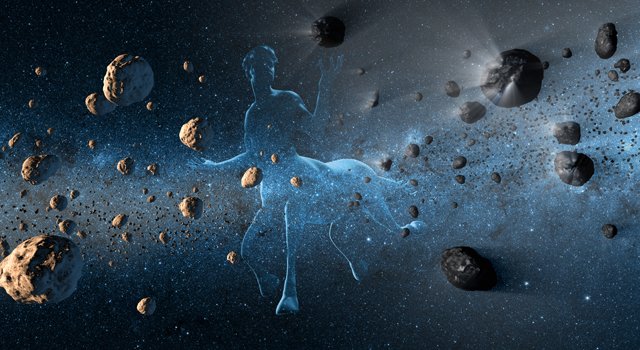
It is believed that these bodies are undergoing an orbital transition. Centaurs were originally pulled inwards gravitationally out of the Kuiper belt, and will most probably end up as short period comets of the Jupiter family. I suspect that this process is the tail of the bombardment that occurred in the inner solar system 4 billion years ago, although this is just personal speculation. In that perspective, Chariklo is lucky, being close to a resonance with Uranus, it will enjoy a relative orbital stability that will last tens of millions of years.
Chariklo is surrounded by two rings: The inner ring, Oiapoque is widest (about 7 km) and is located 266 km from the surface (391 km from the center). The outer ring, Chui is thinner (3 km) and is 275 km from the surface (9 km further away from Oiapoque). Both rings are believed to be mostly composed of water ice.
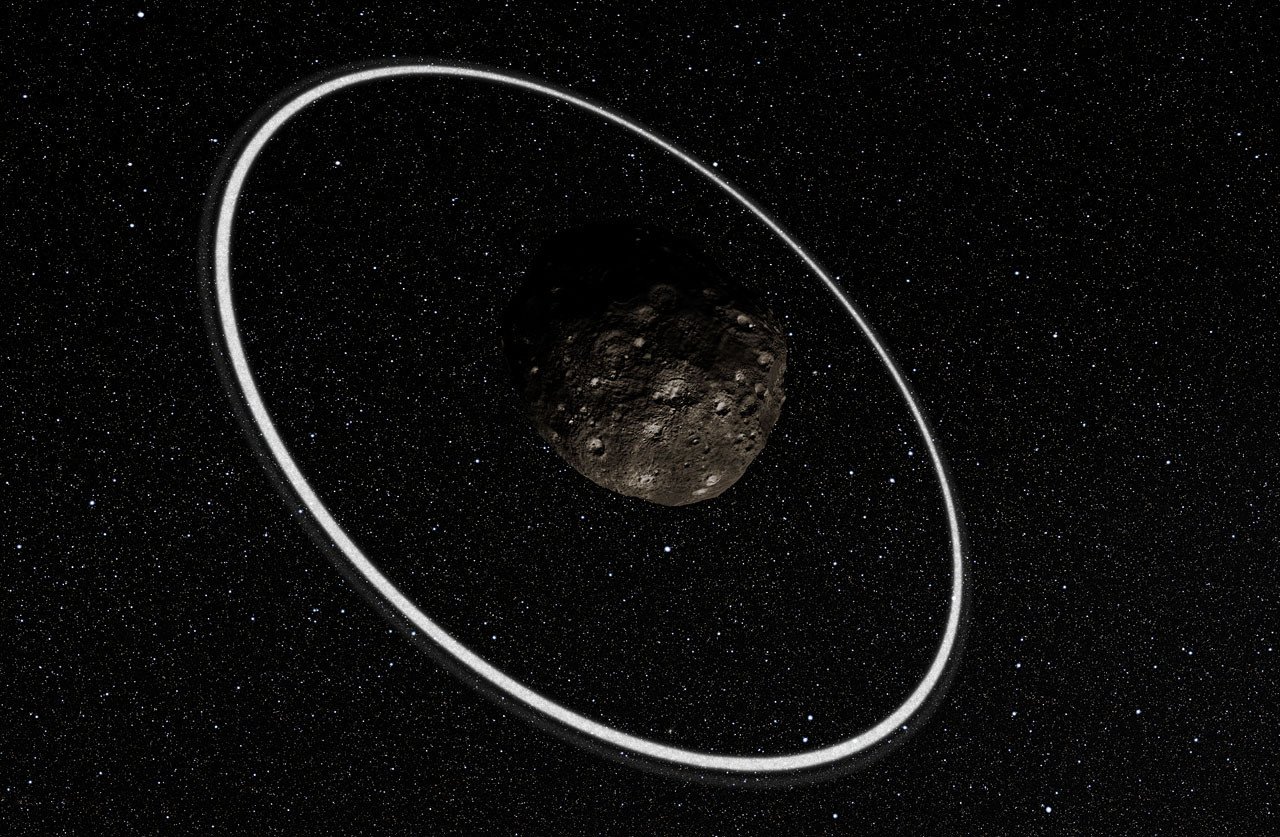
The rings were discovered by a team of the National Observatory of Brazil: the names Oiapoque and Chui are those of the two rivers that throw themselves in the Atlantic ocean and delimit Brazil from two of its neighbors (respectively, the Oyapok river at the border with French Guyana, and the Chui river at the border with Uruguay).
The name Chariklo, originates from Greek mythology: Charyklo was the wife of Chiron, the wisest and justest of all the centaurs. She was also the daughter of Apollo (god of music, art, poetry, medicine, the Sun, light and knowledge).
Chariklo’s rings as seen in the artist view above are well delimited. It is believed that this is because of the presence of small shepherd moons of a few hundred meters in diameter. These tiny moons apply a gravitational force on the material in the rings to keep it from spreading out.
This is the exact same process that stabilizes Saturn’s F ring as seen in this picture taken by the Cassini probe (the shepherd moons being here Pandora and Promethee).
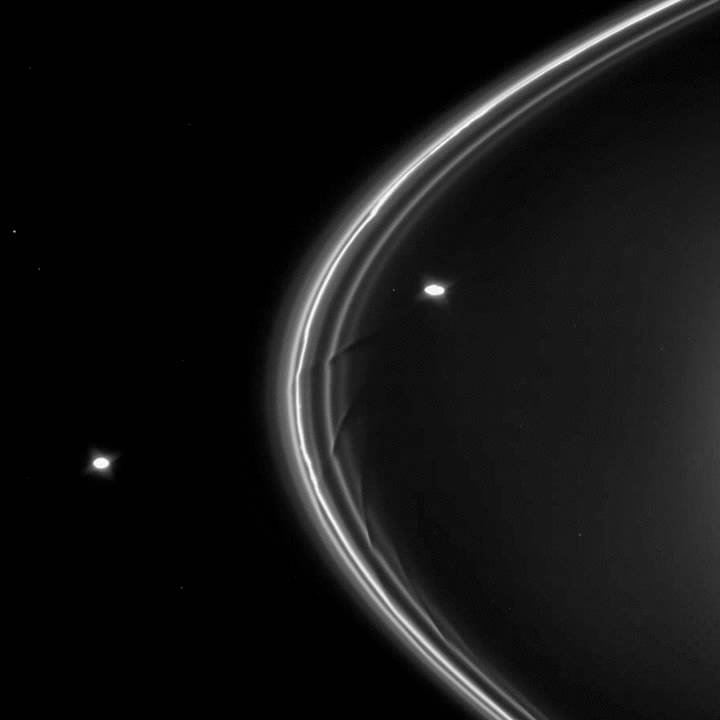
These moons act like sheepdogs keeping the flock of sheep from spreading out, this is why these bodies are called shepherd moons.

How were the rings detected ?
The detection of the rings occurred in 2013. The researchers had in mind to benefit from the occultation of a star by Chariklo to determine its size and shape with an improved precision. They hoped also to detect the eventual presence of moons.
The stellar occultation technique is an effective method for this type of investigation: when a body passes in front of a point light source, it will occult the light source. Studying the path of a solar system body over the years allows calculating its orbit. From that, one can calculate its linear speed with high accuracy. By measuring the duration of an occultation in front of a punctual light source like a star, it is therefore possible to determine its size and even some characteristics of its shape.
Here are the results:
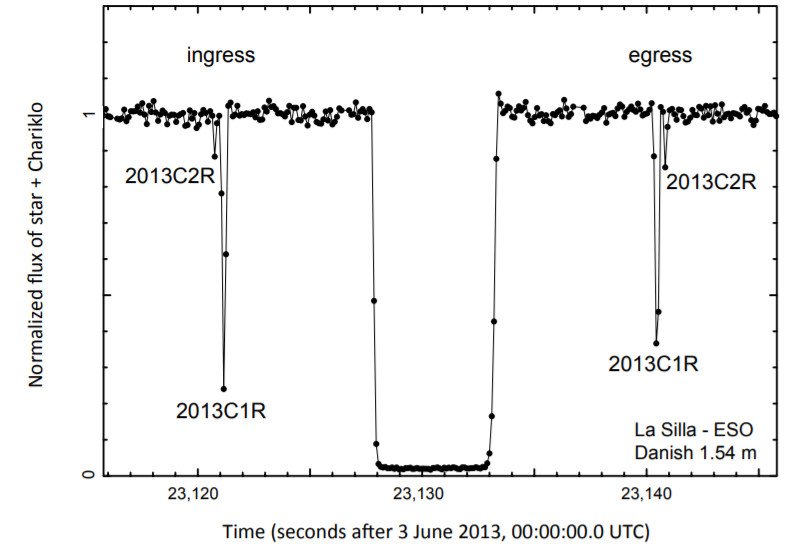
One can clearly see on either side of the central occultation by Chariklo, smaller and sharper dips. It is clear that we have there a double ring system. I can imagine the ecstatic state of mind the scientists must have experienced when the data came in!

The wonders of our Solar system
In the early 80s, I was just a kid. Thinking about the planets of our solar system triggered the wildest daydreams! I imagined witnessing the sulfuric acid rains of Venus, hiking in the deserts of Mars, riding the winds of Jupiter, being dazzled by the rings of Saturn and-cross country skiing on the nitrogen snows of Pluto.
Later, in the late 90s, I would dream of windsurfing the ethane lakes of Titan, skating the ices of Europa or hiking through the sulfurous colors of Io.
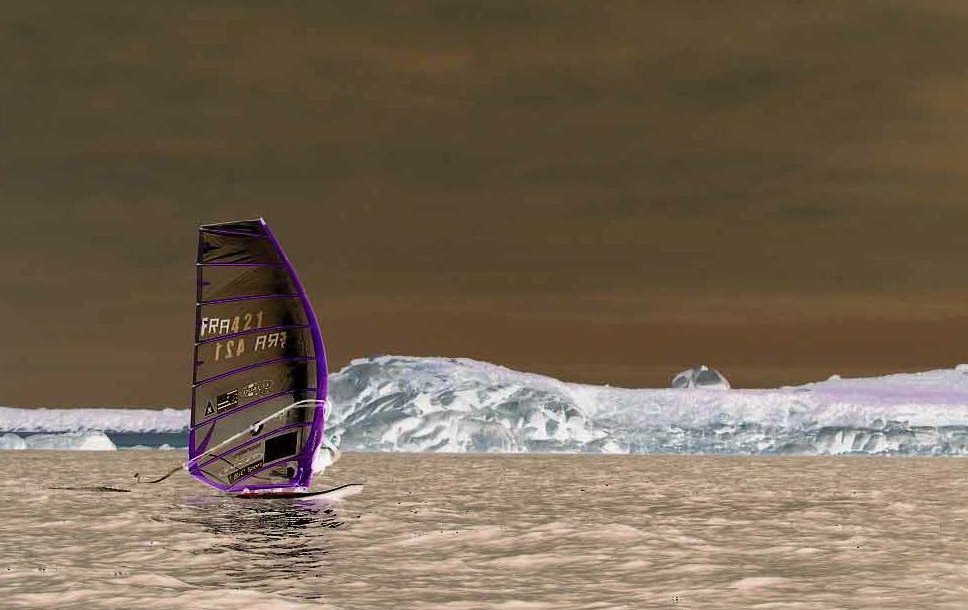
In the 2000s it was the Kuiper belt that fascinated me, with the discovery of all these new planets, Eris, Makemake, Sedna, Quaoar, Orcus, Haumea, all with different properties and therefore wonders...
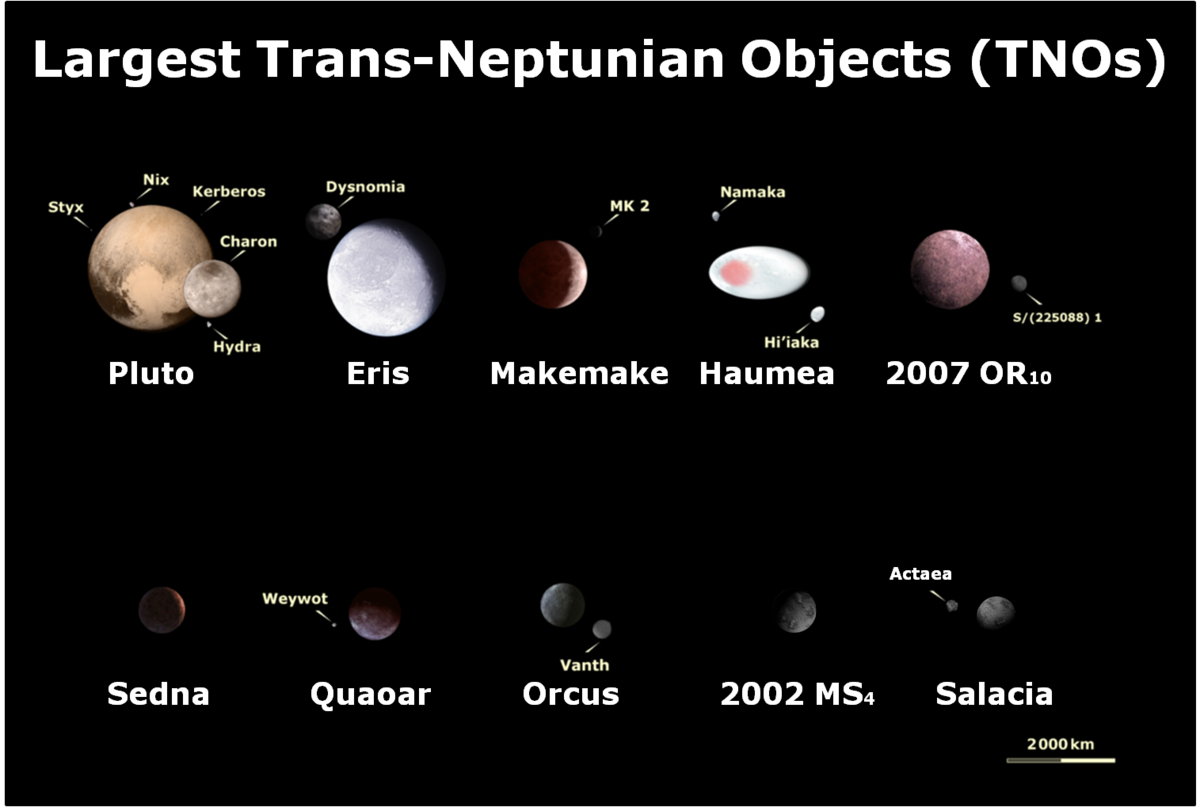
One could have thought by then that this was over: we have discovered everything of interest about our inner solar system. But no, in the 2010s, new staggering discoveries continue to show up, like the rings of Chariklo. I am continuously amazed by our solar system decade after decade…
What will the early 2020’s come up with? Signs of life in the deep oceans of Europa or in the geysers of Encelade ? A ninth planet beyond the Kuiper belt ? Massive bodies geothermally heated in the Oort Cloud ? Who knows…
What I am sure of is that I am really glad to be alive today to witness all these wonders.

Data sources:
- Pour la Sciences (Numéro spécial Janvier-Mars 2016),
- Various pages on Wikipedia
- Occultation data Chariklo: A ring system detected around the Centaur (10199) Chariklo, F. Braga et al. (https://www.eso.org/public/archives/releases/sciencepapers/eso1410/eso1410a.pdf)
- Data on Haumea: http://www.iaa.es/noticias/haumea-el-mas-extrano-companeros-pluton-tiene-anillo
Image sources / credits
- Title picture: ESO/L. Calçada/Nick Risinger (Wikipedia common)
- Centaure in space: NASA/JPL
- Artist view Chariklo: ESO/L. Calçada/M. Kornmesser/Nick Risinger
- Shepherd Moons: NASA/JPL/SSI
- Dog and Flock: Arbutus Photography (https://www.flickr.com/photos/arbutusridge/8672475349)
- transneptunian objects: Lexicon (Commons 3.0), Exoplanet Expert (Commons 4.0), SpaceDude777
- Planets for the Frieze: http://www.publicdomainpictures.net

Hi,
I’m @muphy,
My life revolves around music production, teaching sciences, and discovery through travel.
You enjoyed that post? Resteem and Upvote!
You are interested in these topics? Follow me!



